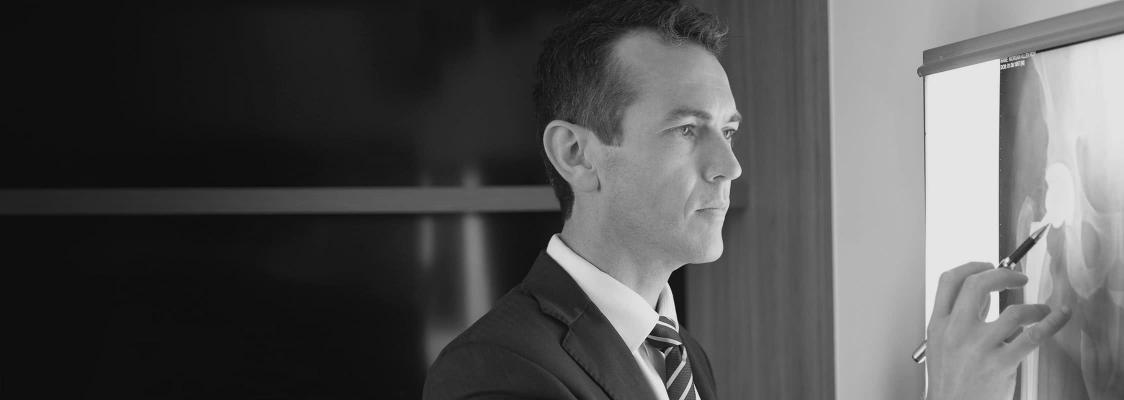At the front of the knee joint, the knee cap (patella) slides against the front and end surfaces of the bottom end of the thigh bone (femur) during normal bending and straightening of the knee. The end of the femur bone has a prominent vertical groove in it that the patella (which has a corresponding vertical ridge) tracks within.
A complex interplay between bone, muscle and ligament structures aims to ensure that the patella remains locked within its normal location (sitting within the groove on the femur).
There are situations that can cause the patella to jump out of its grove and move to an abnormal position at the front of the knee. This is called a patella dislocation. This can occur because of an underlying genetic or knee-structure issue that decreases the strength with which the patella is held in its normal position or it can occur because of an overwhelming force being applied to the patella to push it out of position. Patella dislocation can occur on a single occasion (due to a traumatic injury) or it can occur repeatedly (often starting in teenage years). After a first dislocation injury, some people can develop a tendency to having repeated dislocations.
There are a multitude of reasons why people may have a genetic/developmental pre-disposition towards patella dislocation. Factors such as the shape of the bone (eg. whether the groove on the end of the femur is deep or shallow, whether the patella “escapes” from the groove towards the end of knee straightening), the stiffness or stretchiness of the knee ligaments, the overall shape of the leg (knock-knee or bow-leg appearance) to name a few are all relevant.
Assessment of someone with patella dislocation requires careful and thorough physical examination as well as specialised imaging studies to determine the exact causes of patella dislocation and to develop an appropriate treatment plan that allows for any of the underlying predisposing issues to be addressed.
Dr Doneley performs a variety of procedures to manage this troubling problem. It is quite common for a number of procedures to be combined into a surgical procedure in order to address all of the identified issues and maximise the chance of successful outcomes.
Please see section titled Patella Stabilisation Surgery for further information.
